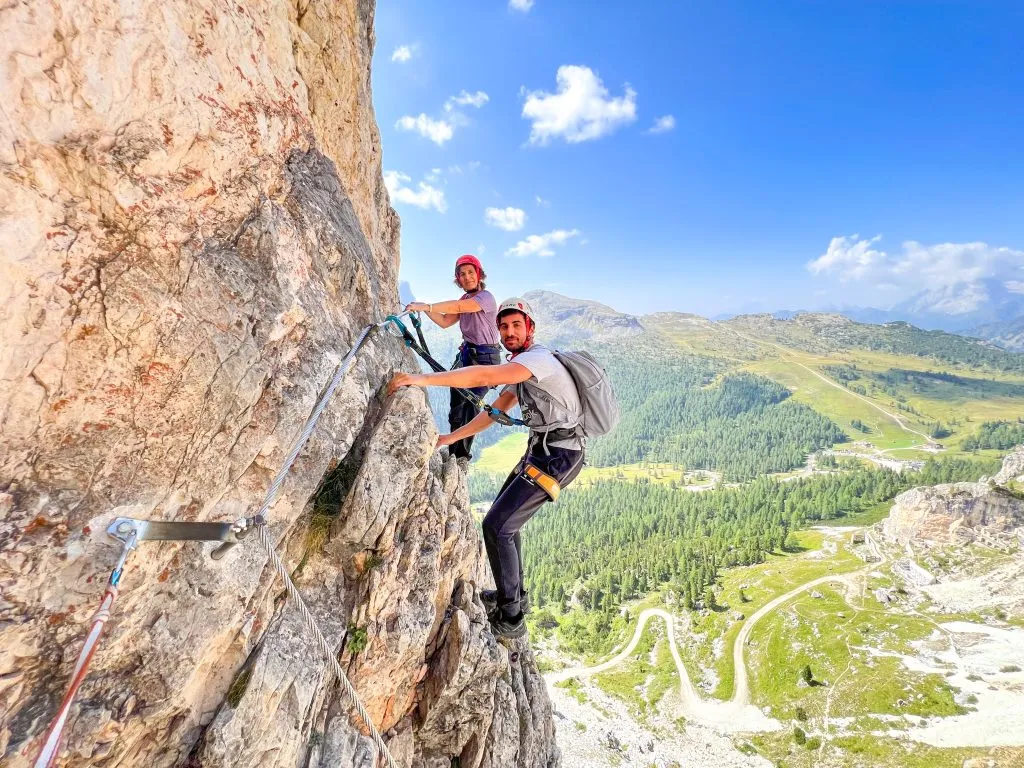
If you’re seeking an exhilarating outdoor experience, look no further than via ferrata—a unique climbing route that combines the thrill of rock climbing with the safety of fixed installations. Whether you’re a seasoned climber or a beginner looking for a new adventure, understanding what a via ferrata is and how to enjoy it safely can open up a world of excitement.
What is a Via Ferrata?
The term via ferrata, which means “iron way” in Italian, refers to a protected climbing route found in mountainous areas. It typically consists of a series of steel cables, ladders, and iron rungs that are fixed to the rock face, allowing climbers to ascend steep terrains safely. Originating in the Dolomites of northern Italy during World War I, these routes were initially created for military purposes. Today, they offer a thrilling way for outdoor enthusiasts to experience breathtaking views without the need for extensive climbing skills.
Key Features of Via Ferrata
- Safety Equipment: Via ferratas are designed with safety in mind. Climbers use a harness, helmet, and a via ferrata set that includes two carabiners and a shock absorber. The carabiners attach to the fixed cables, allowing climbers to secure themselves as they navigate the route.
- Variety of Routes: Via ferrata routes come in various grades of difficulty, accommodating everyone from novices to experienced climbers. This range allows adventurers to select a path that suits their skill level and comfort.
- Stunning Views: One of the biggest draws of via ferrata is the opportunity to enjoy spectacular mountain vistas. As climbers ascend, they often encounter breathtaking landscapes, including valleys, peaks, and alpine lakes.
- Physical Challenge: Climbing a via ferrata provides a great workout. It combines strength, endurance, and agility, making it an excellent choice for those looking to challenge themselves physically.
Where to Find Via Ferrata Routes
Via ferrata routes are popular in many mountainous regions around the world. Some notable destinations include:
- Dolomites, Italy: The birthplace of via ferrata, offering some of the most iconic routes.
- Chamonix, France: Known for its breathtaking views of Mont Blanc and a variety of climbing options.
- Lake Tahoe, USA: Home to several routes with stunning lake views.
- Canadian Rockies: Offering challenging routes amidst stunning natural beauty.
Tips for a Successful Via Ferrata Experience
- Choose the Right Gear: Invest in quality climbing gear, including a helmet, harness, and via ferrata set. Make sure everything fits properly for optimal safety.
- Know Your Limits: Start with easier routes and gradually progress to more challenging ones. Listen to your body and don’t hesitate to turn back if you feel overwhelmed.
- Stay Hydrated and Fueled: Bring water and snacks to maintain your energy levels throughout the climb.
- Climb with a Buddy: It’s always safer and more enjoyable to climb with a partner. Plus, it’s a great way to share the experience.
- Consider a Guide: If you’re new to via ferrata, consider hiring a guide who can provide valuable insights and ensure your safety.

I actually bookmarked this content so I can review it further later on. I must consider some of the points you made. I personally do agree with most of these details.
This is simply the perfect write-up on this specific topic I have seen to date. I’m delighted I had the opportunity to read it. You have done well.
This article is very well searched and compiled. I believe this content valuable information that is presented in an attention-grabbing manner. The elements mentioned here are unique and very well offered. I personally appreciate fantastic writing like this.
Personally, I feel you have contributed a lot to this subject. I liked this article a lot. It cannot be easy to produce each and every sentence fascinating, nonetheless you handled this.
Stunning material! I personally enjoy the hard work and also the effort you put into the research and writing. I stand in agreement on just about any viewpoint.